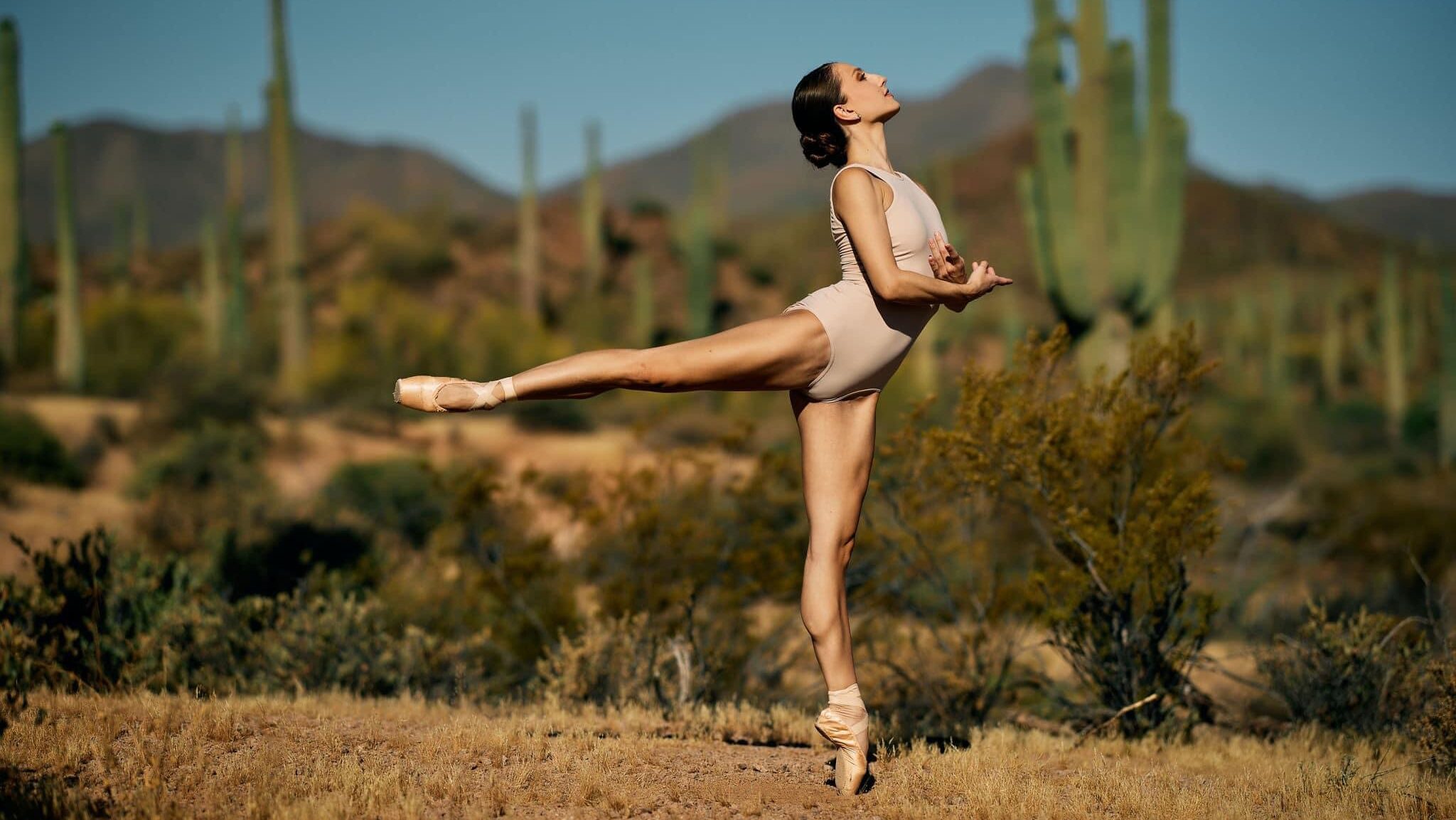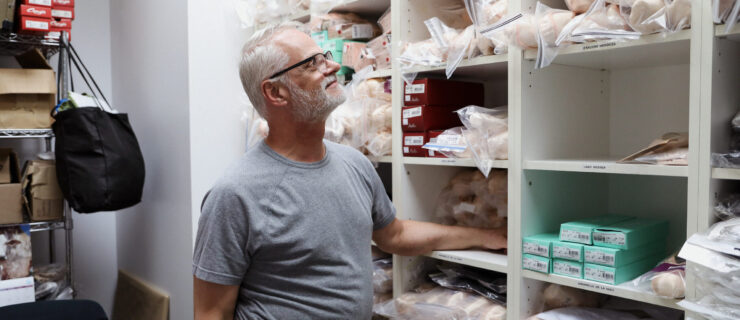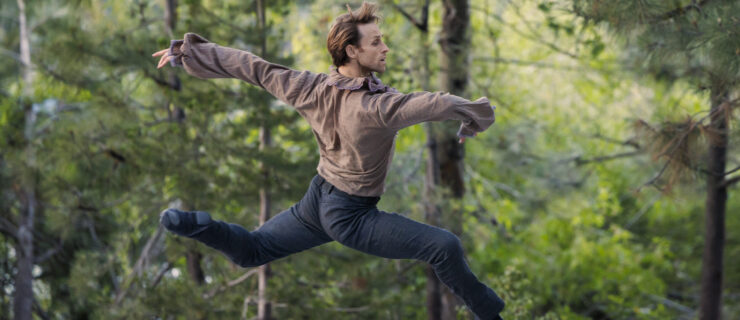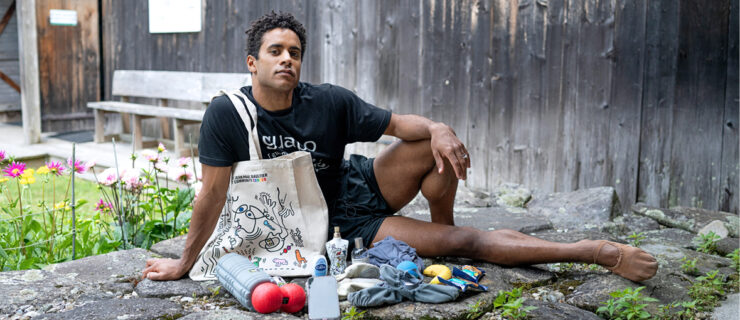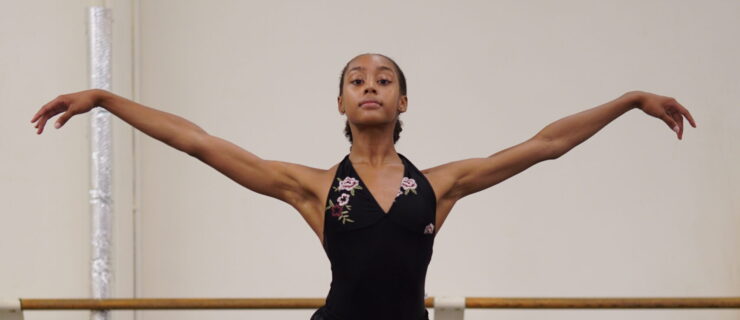Margaret Mullin Seeks to Raise Ballet Tucson’s Profile With Fresh Repertoire
When Margaret Mullin, a former Pacific Northwest Ballet soloist, took the reins as artistic director of Ballet Tucson in the spring of 2022, she was coming back home. A Tucson native, Mullin had trained at the School of Ballet Tucson and returned at various points to teach, choreograph, and coach. After departing PNB in 2020, she began working remotely for Ballet Tucson to support the company’s marketing and fundraising efforts during the pandemic. After they’d raised enough money to return to the stage in the fall of 2021, she was offered the artistic directorship and moved back permanently to begin preparing. By spring, she was ready to take the helm—she was a regular presence at the studios and active in both the ballet and local communities. “I really do believe that great art belongs everywhere, and Ballet Tucson has the responsibility to bring great art to our community,” she says.

With the help of associate artistic director and resident choreographer Chieko Imada and rehearsal director Brik Middlekauff, Mullin has steadily worked to make Ballet Tucson’s presence known. She’s hired dancers from across the country and is presenting new repertoire, bringing in sought-after choreographers while maintaining a foundation of both classical and Balanchine ballets. This diversity of repertoire, combined with a passionate focus on coaching, is why dancers, such as principal Danielle Cesanek, a seven-year veteran, have stayed put. “We’re doing similar rep to bigger companies, and have similar talent to bigger companies, but you have all the perks of a smaller one,” says Cesanek.

Founded primarily as a school in 1986 by Mary Beth Cabana, who served as artistic director until Mullin’s appointment, Ballet Tucson supplemented performances with a regular group of guest artists until it fully professionalized in 2004. Since its outset, it has grown from 10 dancers to 32 this past season. “We have a really talented group of dancers that are very versatile and very strong,” explains Mullin. “They’re hungry for new works.”
One way she’s gone about meeting that desire is by programming choreographers from her career at PNB, including Christopher Wheeldon, Justin Peck, and PNB associate artistic director Kiyon Ross. (Their second Peck work, Pulcinella Variations, is scheduled for the 2024–25 season.) She’s also developed a budding relationship with Louisville Ballet resident choreographer Andrea Schermoly. “Her work has a unique athleticism, as well as a lot of emotional depth, that really highlights our dancers,” says Mullin.
The company’s Balanchine repertoire has also grown since Mullin’s appointment. Next season, for instance, includes the company premiere of “Rubies.” Former New York City Ballet dancer Zippora Karz stages Balanchine’s work for Ballet Tucson and is a regular presence in studio. “She’s been a mentor to me since my first day,” says Cesanek, adding that Karz regularly offers to come in on days off, arms full of videos, ready to coach.
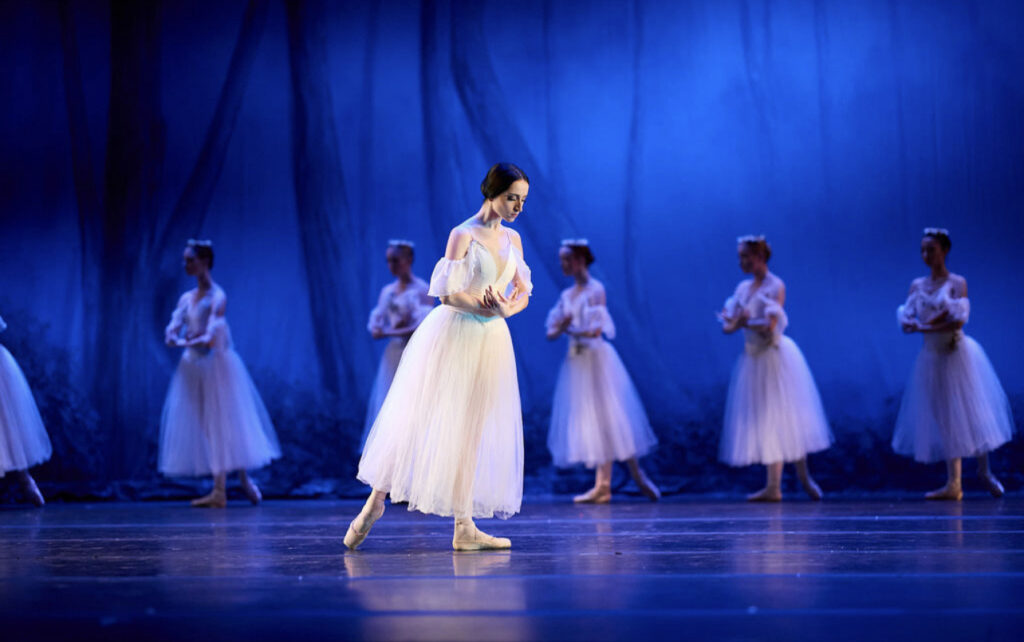
Besides Nutcracker, the company also performs a variety of classical works, such as Giselle Act II and Paquita, and Mullin hopes to add more into their regular rotation. Imada, whose work ranges from narrative-driven to abstract, also creates a new ballet every year. “She has a very creative mind,” Cesanek says. “You can tell when she’s starting that she has a vision and she’s very quick to achieve it. At the same time, she is very accommodating to the dancers.” Imada’s work often premieres at the Tucson Desert Song Festival, an annual partnership where live vocalists and musicians are integrated onstage with the dancers.
Cesanek says Mullin’s repertoire choices are welcome opportunities for artistic growth: “I felt the intensity shift [among the dancers],” she says. “People really wanted to excel, saying, ‘Wow—there’s these really great roles I want to dance. I really want to push myself.’ ” As a small company, principals and soloists might still dance in corps sections if necessary; both Mullin and Cesanek agree that everyone needs to be able to do everything. “It’s a beautiful art form that we all love and want to do well,” says Mullin. “We are all on the same team here.”
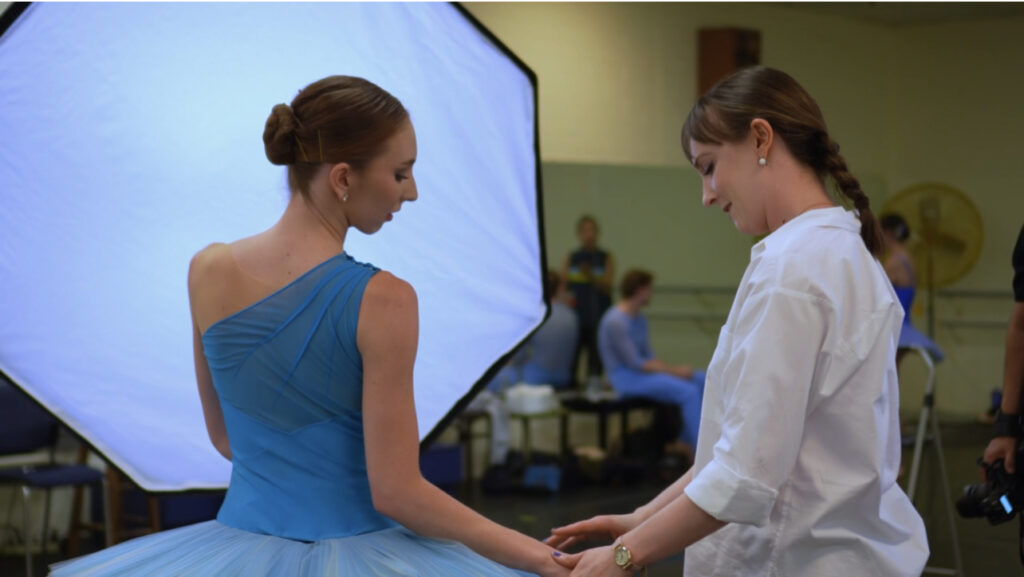
While Mullin has no plans to grow the roster, she does want to improve the dancers’ financial security. Living comfortably in Tucson requires them to supplement their income—many teach in the school or have coffee shop/service jobs. Cesanek argues that it’s worth it, due to the coaching and investment she’s received from artistic staff. “The level of coaching here is so detailed and intense—I think a lot of professionals don’t necessarily feel prepared before they go onstage, but I can honestly say I’ve never felt unprepared in this company.”
For Mullin, everything comes back to the dancers. “We’re very invested in creating an excellent product to put onstage, but there’s a respectful way to do that—a way for dancers to feel seen and valued, that they’re truly contributing to something.” She does that by prioritizing honest feedback and striving to be as transparent as possible about casting, promotions, and career trajectories. With that, she works to be in the studio as much as possible so that her decisions are informed. “Clear is kind,” says Mullin. “I really do believe that.”
Ballet Tucson at a Glance
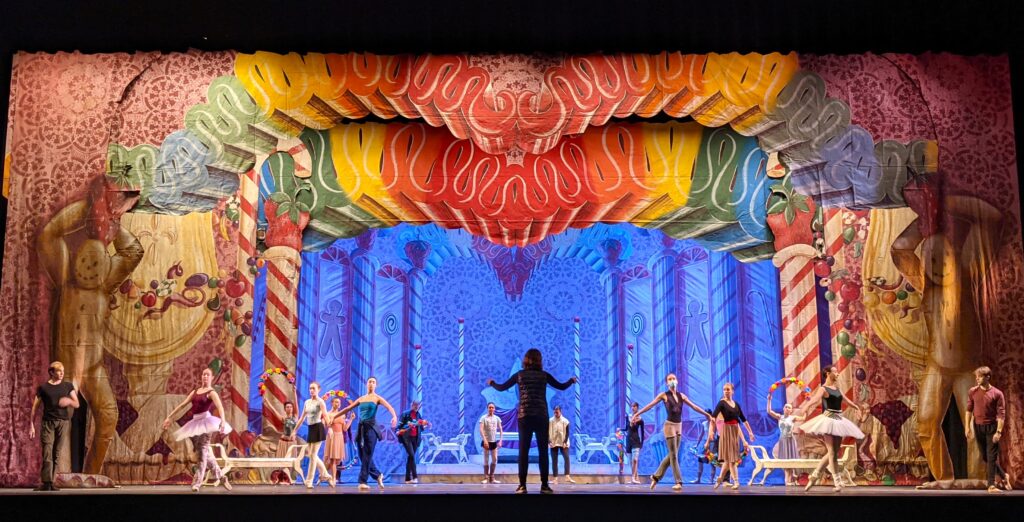
Number of dancers: 32
Contract length: 20 weeks
Performances per season: 18
AGMA signatory: No
Website: ballettucson.org
Audition Advice
In-person auditions at Ballet Tucson are by invitation only. (The company does not hold open calls in appreciation for the financial burden incurred by dancers during audition season.) To be considered, send a resumé, headshot, dance photos, dance reel, and letters of recommendation to [email protected].
After class, Mullin and Imada conduct one-on-one interviews with prospective dancers. “Everyone needs a unique touch to be the strongest artist they can be, and our approach is generally that way—not to throw someone in the deep end, but be there for every step, and give all the knowledge one needs,” says Mullin. “We want people that are really going to dive into the process with us and allow us to nurture their growth.” Personal character is especially important to Mullin. She will pass over a talented dancer if they do not possess passion, a sense of teamwork, and grounded-ness.
